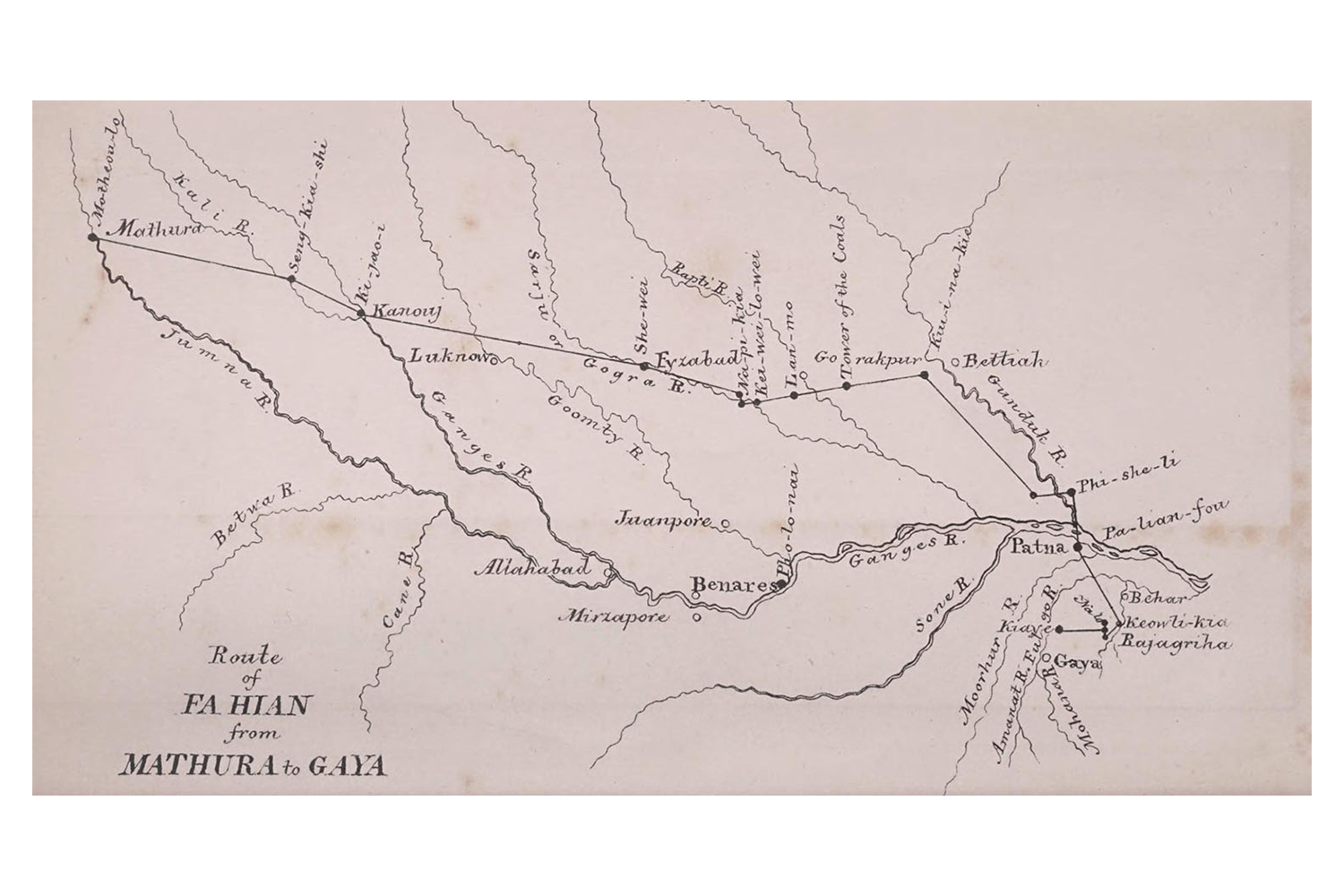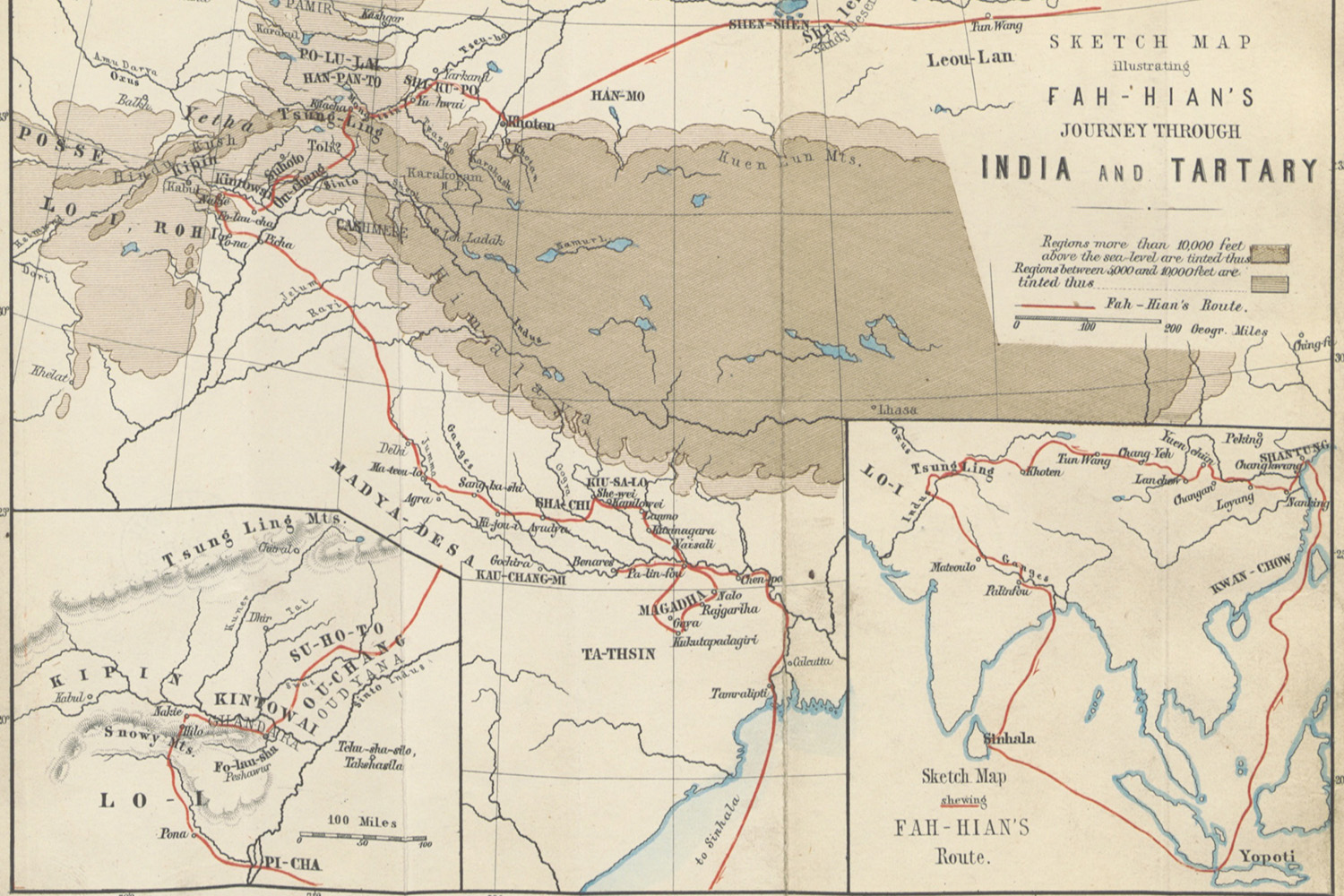ARTICLE
Faxian (b. c. 337 CE; d. c. 422 CE)
A Chinese Buddhist monk and traveller who lived in the fourth and fifth centuries, Faxian is credited with the translation of several Sanskrit Buddhist texts into Chinese. The accounts of his travels to South Asia via land and sea routes to acquire the original texts has also helped scholars gain a historical understanding of Buddhism in the region in the fifth century.
Little is known about Faxian’s early life other than that he was born in the Shanxi province in northern China. In 399 CE, in his early sixties, Faxian began his journey to India with the intent of procuring manuscripts on vinaya (the rules of monastic life in Buddhism) as well as to visit sacred sites in India associated with the life of the Buddha. Departing from Chang’an (present-day Xian) in north-western China, Faxian travelled across parts of present-day Afghanistan and Pakistan before arriving in India. He crossed into the north-western part of the Indian subcontinent in 402 CE, visiting the sites of Udyana, Peshawar and Taxila before travelling eastwards into the Gangetic plains.
In India, he visited the sites of Mathura, Sankissa, Shravasti, Kapilavastu, Vaishali, Pataliputra, Rajgir, Bodhgaya and Sarnath — sites which had a strong Buddhist presence and were connected to events in the life of the Buddha. He then made his way to the port city of Tamralipti (present-day Tamluk, West Bengal, India), from where he travelled on a mercantile ship to Sri Lanka. He spent two years there before returning to China.
Upon his return, he began working on translations of the Buddhist texts he had transcribed and brought with him. These included the vinaya of the Mahasanghika school and the Sarvastivada school as well as the Mahaparinirvana Sutra. His translation of the vinaya of the Mahasanghika school helped in the regulation of monasteries in China, while his translation of the Mahaparinirvana Sutra served as the foundation for the doctrines of the Nirvana School in China.
He also compiled his accounts of this journey in Foguoji (Record of Buddhist Kingdoms). These chronicles are known for their emphasis on associating various sites along his route with Buddhist legends. He linked the site of Taxila (in present-day Pakistan) with a tale of one of the Buddha’s previous lives in which he had offered his body to a tigress. He also recorded details of the number of Buddhist monasteries and the number of monks at various sites, as well as the rituals practised at these institutions. His accounts also describe rituals around worshipping the Buddha’s alms bowl in Peshawar and the ceremony held in veneration of the Buddha’s tooth relic in Sri Lanka.
Faxian’s accounts, along with those of the Chinese pilgrim-travellers Xuanzang and Yijing, gained importance in the nineteenth century among archaeologists who were interested in the Buddhist history of the subcontinent. Consequently, Foguoji was translated into French by the scholar Jean-Pierre Abel Remusat in 1836 and later to English. Since Faxian’s travels in India were limited to northern and eastern India, compared to Xuanzang, who also ventured into central and coastal India, Foguoji was considered supplementary to Xuanzang’s chronicles, Datang-Xiyu-Ji, and was primarily used to glean information on sites that the latter did not reference extensively.
Bibliography
Arvon, Henri. “Faxian.” In Encyclopedia Britannica, April 11, 2019. Accessed February 28, 2023. https://www.britannica.com/biography/Faxian.
Deeg, Max. “The Neglected Pilgrim: How Faxian’s Record Was Used (and Was Not Used) in Buddhist Studies.” Hualin International Journal of Buddhist Studies 2, no. 1 (2019): 16–44. https://buddhism.lib.ntu.edu.tw/FULLTEXT/JR-MAG/mag609070.pdf.
Sen, Tansen. “The Travel Records of Chinese Pilgrims Faxian, Xuanzang and Yijing.” Education About Asia 11, no. 3 (Winter 2006): 24–33. http://afe.easia.columbia.edu/special/travel_records.pdf.








